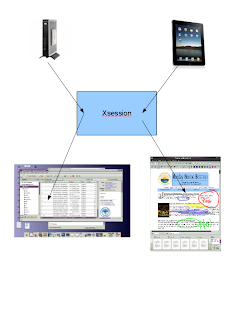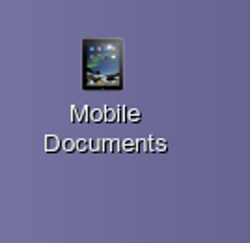I have been busy working on various projects and making progress. Our architecture group also had a meeting and have made some decisions about some open design goals.
Compiz No MoreAt this time we are going to not bring over Compiz to the new GNOME desktop that I am building. This technology will probably be tested in a back burner type project, but is not on the design goals that must be met before we go can go live. There are users that love Compiz and I too used it every day, but a few issues were taken into consideration. 1) In order to have a consistent thin client build on all HP models (5725, 5735, 5745) we upgraded to HPs Debian Lenny build. On our ATI cards, the 3D desktop is crashing the Xserver periodically. For some people it never happens, and for others it happens often. I haven't gotten any updates to my bug report and don't expect that anyone will fix this issue. When HP releases a Squeeze update, I'll review the updates and try again. 2) We wanted to have a consistent desktop now on all devices. If you enabled Compiz here at City Hall it worked great. If you went to a remote site on lower bandwidth the regular GNOME desktop appeared by design. Sometimes people had been on Compiz so long, they didn't remember how the other desktop works. 3) We are anticipating a future where people will be on more and more mobile devices and carrying devices with them; so a simple, fast and consistent interface is desired. You aren't going to be pinching your fingers and turning a cube on an iPad type device right? :)
On a technical note, I compiled Compiz 0.9.0 on the 64bit server and the speed was excellent. With some patches from Debian on the thin clients and more time I am confident it would have worked great. Sadly, time is my biggest enemy sometimes.
Firefox 4 UpdatesWe have about 15 people using Firefox 4 (64bit) fulltime and all plugins are working and the server looks great. Pages are loading faster than ever and scrolling is crisp and fast. I'm very pleased with the results. Having 48 CPUs kind of helps too. :) I expect this server to run for a good 4-5 years and it's the most cost effective way to deploy browser and video technology to our users and our thin clients. Adobe Acrobat, Flash and Firefox are touched once and the updates go to everyone instantly. This server should go into wider deployment in the coming weeks...almost done.
Desktop MIME UI StatusAs I have been adding users to the beta desktop, I have been hearing consistently that they really like MIME UI bars that open when you double-click on files. It's as simple as it can be to move files around the network while sheltering them from the physical processes. I have said many times that a file picker that opens in any application is the kiss of death for productivity. Navigation even in 2010 is one of the hardest concepts for regular users to understand.
We have been working on promoting the usage of the insert link/file:// technique in Evolution to email a link of a document to other employees instead of doing a physical attach. This reduces the instances of duplicated documents and also helps with quota space in the post office. I experimentally added a feature to do this automatically from the GUI and it's working well. When they double-click on a PDF for instance, one of the options is [ Link To Evolution Message ] (below). This builds a small HTML file which is attached to a new email message and contains a bit of href "magic".

Below is the resulting Evolution message generated. This eliminates them having to use the Insert Link feature, and mess around with spelling things correctly and understanding where documents are stored. Feedback was positive on this feature. I think once we have more people using this feature, it will be used often.

The other feature that I added was a checkbox to help resolve one of our improvement areas: users don't understand how big the pictures are that are coming from their cameras. Shooting 10 megapixel is great, right? :)
When [X] Email Friendly Size is pressed the picture is reduced to 800x600 and compressed into JPG.
 USB Sticks, Viruses And Functionality
USB Sticks, Viruses And FunctionalityThose users with permissions are able to gain access to USB sticks on our current deskop and it's working well. A ftp daemon is running on the thin client and allows the GNOME server to gain access to the device. FTP is jailed into /media and also certain types of files are disallowed from view. Pictures and OpenDocument files can be moved to/from the sticks. Microsoft Office and PDFs can be moved TO the sticks, but not FROM the sticks. This is because of their virus risk, and also the fact that this work flow is not in our business practice. Documents should not be constructed off network and especially with non-City standard software packages. All of our software writes documents into open document format. If documents are to be received from the outside, they should be emailed whereby they are fully checked for viruses. It also is not a good practice to use USB sticks to house data. The risk of data loss (loss, theft, physical failure) is very high.
A review of the logs indicates that primarily users are using USB sticks to upload pictures, and very often just a few pictures at a time for inclusion into documents and presentations. I have designed a mockup of a dialog that will come up when a USB stick is inserted into the thin client. For many users, this will provide a simple UI to handle their needs with no file managers. The UI will build thumbnails of the last 32 photos taken along with a summary of files contained on the stick. If the user clicks on the image it puts it into their copy buffer at which time it can be pasted into any other application. This also will allow me to shrink the image to 1024x768 prior to putting it into the clipboard and reduce the huge pictures that are being taken on the cameras. The UI also gives them the option of emailing PDF and MS Office documents to their email account.

Of course the users will continue to have access to the full file manager to manually drop and drag files as they did previously. But at least now a simple interface which covers 80% of our needs will open automatically when usb insertion is detected.
Coming up for me next week:
- Begin moving services live on the new Firefox 4 server.
- Continue testing the new GNOME server, and installing updates and patches.
- Await the next avant-window-navigator tarball to fix a few issues.
- Experiment with making the USB process easier
- Begin testing some ideas to speed up rdesktop/xfreerdp with the use of a RAM file system on the thin clients.
- Being engineering the replacement for the server that holds the bulk of our documents and pictures. Use beagle again or try and install Zeitgeist?

















































